- 翰林提供学术活动、国际课程、科研项目一站式留学背景提升服务!
- 400 888 0080
Edexcel A Level Chemistry:复习笔记7.1.1 Chirality
Optical isomers
A carbon atom that has four different atoms or groups of atoms attached to it is called a chiral carbon or chiral centre
Chira comes from a Greek word meaning hand, so we talk about these molecules having a handedness
The carbon atom is described as being asymmetric, i.e. there is no plane of symmetry in the molecule
Compounds with one chiral centre (chiral molecules) exist as two optical isomers, also known as enantiomers
Just like the left hand cannot be superimposed on the right hand, enantiomers are non-superimposable
Enantiomers are mirror images of each other

A molecule has a chiral centre when the carbon atom is bonded to four different atoms or group of atoms; this gives rises to enantiomers
Exam Tip
When drawing optical isomers, always draw mirror images including wedge and dashed bonds

The Nature of a Racemic Mixture
The chemical properties of optical isomers are generally identical, with one exception
Optical isomers interact with biological sensors in different ways
For example, one enantiomer of carvone smells of spearmint, while the other smells of caraway

Carvone optical isomers have distinctive smells
Optical isomers have identical physical properties, with one exception
Isomers differ in their ability to rotate the plane of polarised light
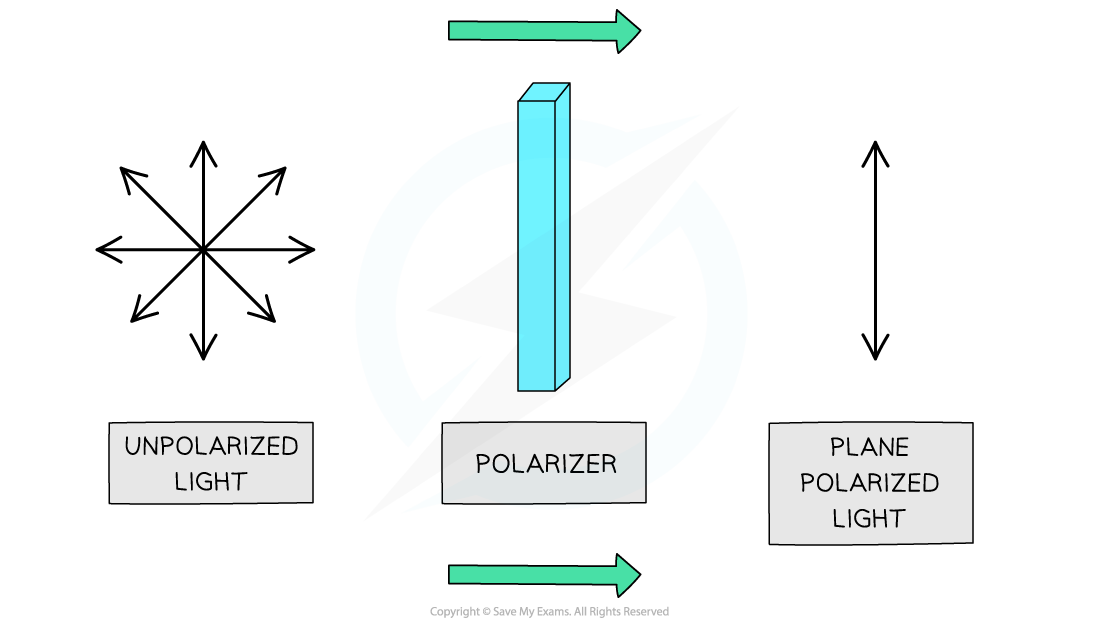
When unpolarised light is passed through a polariser, the light becomes polarised as the waves will vibrate in one plane only
The major difference between the two enantiomers is:
One enantiomer rotates plane polarised light in a clockwise manner and the other in an anticlockwise fashion
A common way to differentiate the isomers is to use (+) and (-), but there are other systems using d and l, D and L, or R and S
The rotation of plane polarised light can be used to determine the identity of an optical isomer of a single substance
For example, pass plane polarised light through a sample containing one of the two optical isomers of a single substance
Depending on which isomer the sample contains, the plane of polarised light will be rotated either clockwise or anti-clockwise by a fixed number of degrees
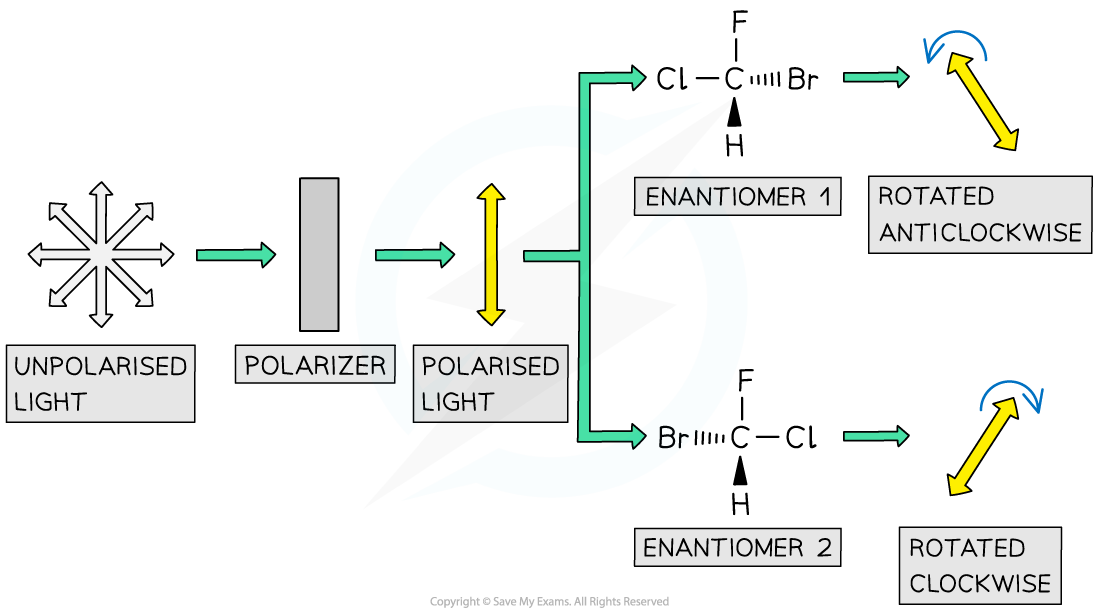
Each enantiomer rotates the plane of polarised light in a different direction
A racemic mixture (or racemate) is a mixture containing equal amounts of each enantiomer
One enantiomer rotates light clockwise, the other rotates light anticlockwise
A racemic mixture is optically inactive as the enantiomers will cancel out each others effect
This means that the plane of polarised light will not change
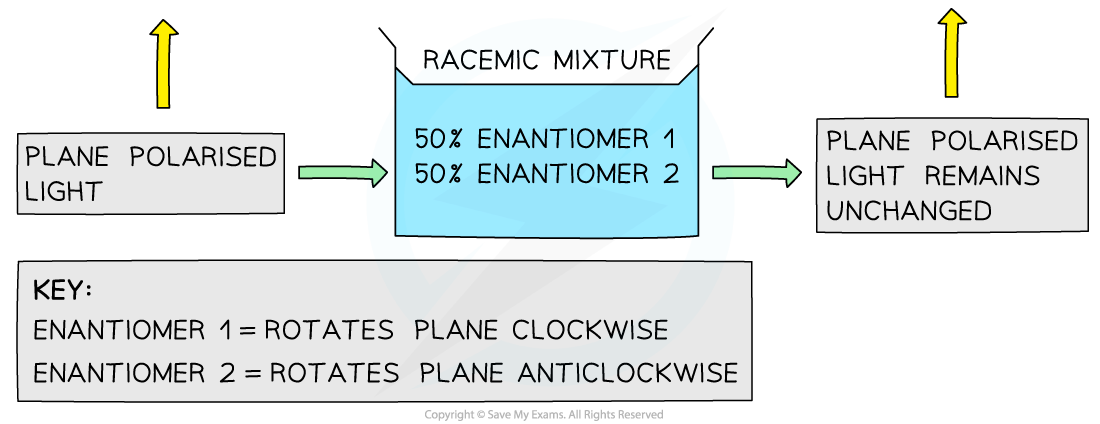
Racemic mixtures are optically inactive
Racemic mixtures and drugs
In the pharmaceutical industry, it is much easier to produce synthetic drugs that are racemic mixtures than producing one enantiomer of the drug
Around 56% of all drugs in use are chiral and of those 88% are sold as racemic mixtures
Separating the enantiomers gives a compound that is described as enantiopure, it contains only one enantiomer
This separation process is very expensive and time consuming, so for many drugs it is not worthwhile, even though only half the of the drug is pharmacologically active
For example, the pain reliever ibuprofen is sold as a racemic mixture
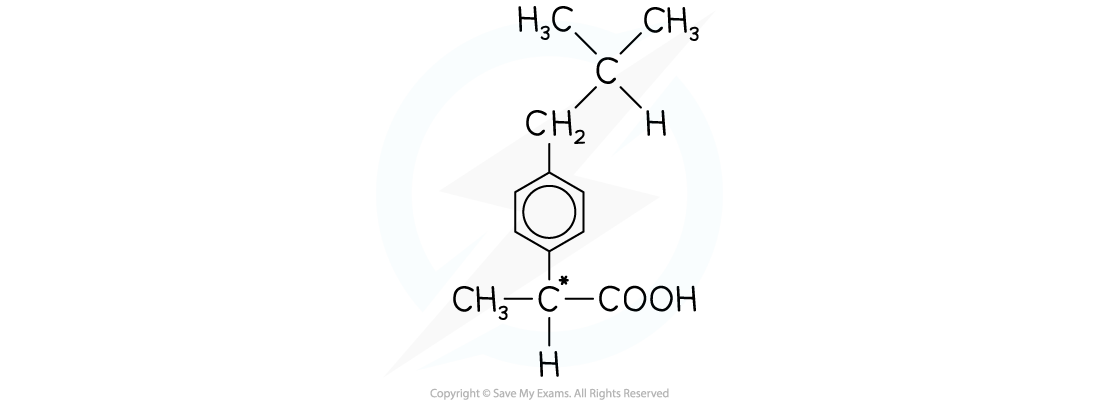
The structure of ibuprofen showing the chiral carbon that is responsible for the racemic mixture produced in the synthesis of the drug
Optical Activity & Mechanisms
Optical activity can be used to suggest the mechanism of a chemical reaction
This is particularly the case for nucleophilic substitution
Nucleophilic substitution can occur via an SN1 or SN2 mechanism
SN1 mechanism
The SN1 mechanism is a two-step reaction
In the first step, the C-X bond breaks heterolytically and the halogen leaves the halogenoalkane as an X- ion
This leaves a trigonal planar, tertiary carbocation
In the second step, the planar, tertiary carbocation is attacked by the nucleophile
The nucleophile is able to attack from either side of the planar carbocation, which results in the formation of a racemic mixture
Therefore, a reaction with an SN1 mechanism will produce a racemic mixture
SN1 Optical Isomers Mechanism
SN2 mechanism
The SN2 mechanism is a one-step reaction
The nucleophile donates a pair of electrons to the δ+ carbon atom of the halogenoalkane to form a new bond
At the same time, the C-X bond is breaking and the halogen (X) takes both electrons in the bond
The halogen leaves the halogenoalkane as an X- ion
For example, the nucleophilic substitution of bromoethane by hydroxide ions to form ethanol
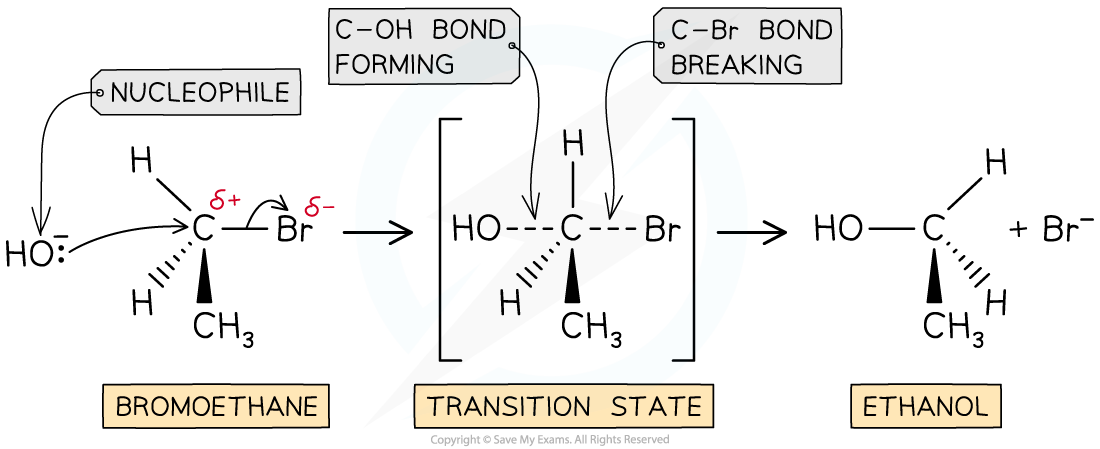
The SN2 mechanism of bromoethane with hydroxide causing an inversion of configuration
The bromine atom of the bromoethane molecule causes steric hindrance
This means that the hydroxide ion nucleophile can only attack from the opposite side of the C-Br bond
Attack from the same side as the bromine atom is sometimes called frontal attack
While attack from the opposite side is sometimes called backside or rear-side attack
As the C-OH bond forms, the C-Br bond breaks causing the bromine atom to leave as a bromide ion
As a result of this, the molecule has undergone an inversion of configuration
The common comparison for this is an umbrella turning inside out in the wind
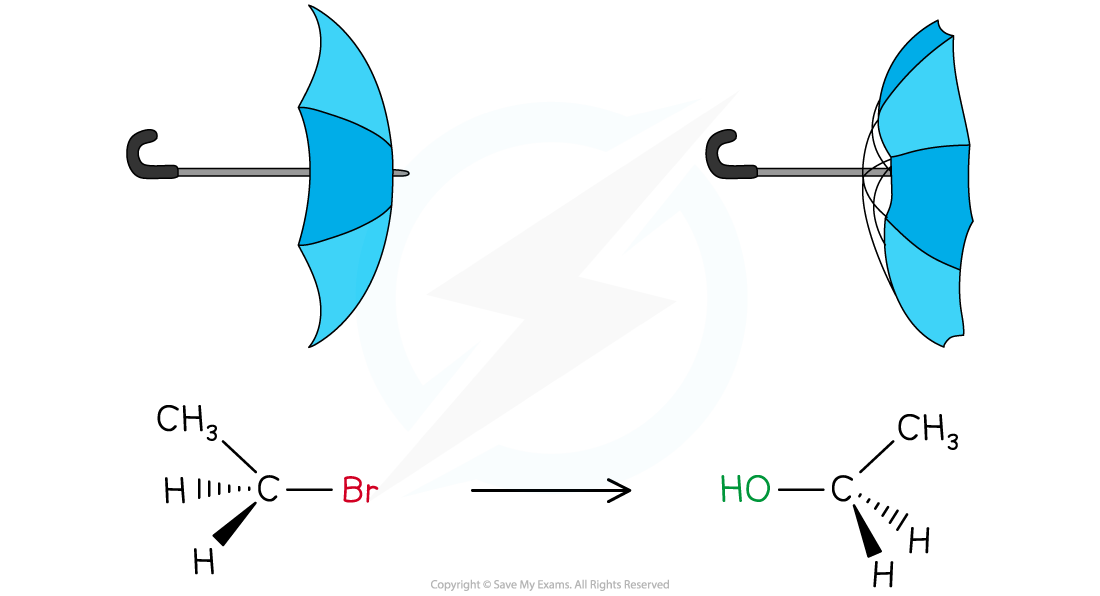
Inversion of configuration - umbrella analogy
Therefore, if a reaction with an SN2 mechanism starts with an enantiopure reactant then an enantiopure products will be formed
转载自savemyexams

早鸟钜惠!翰林2025暑期班课上线

最新发布
© 2025. All Rights Reserved. 沪ICP备2023009024号-1








